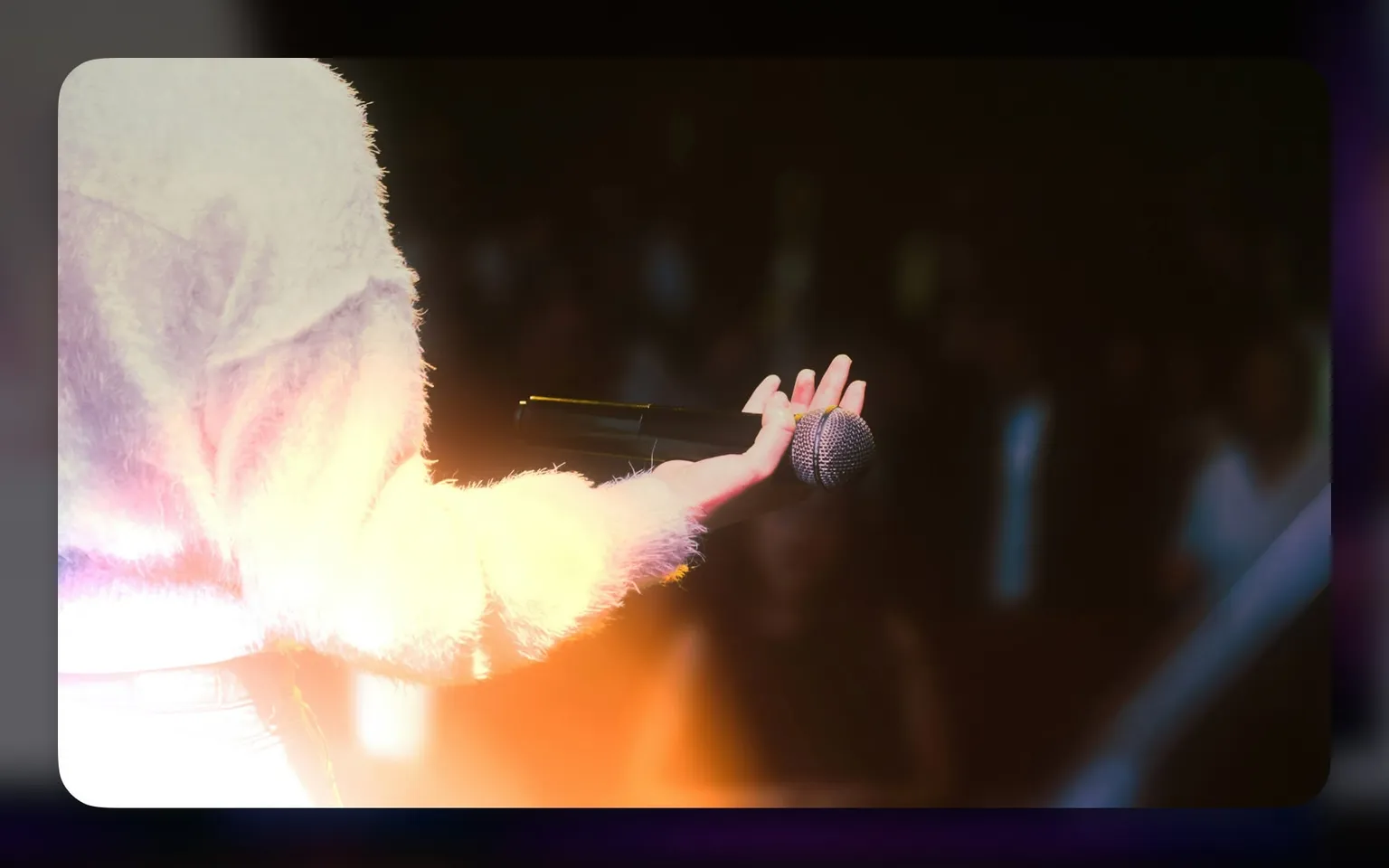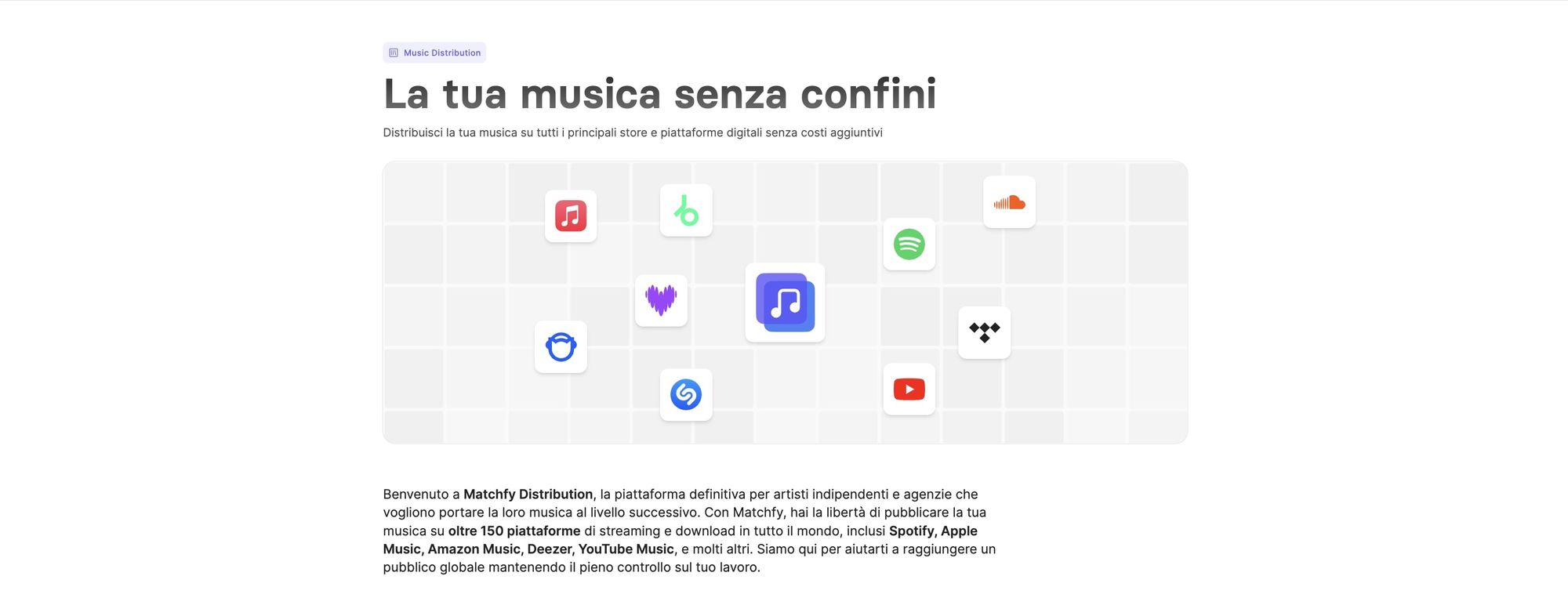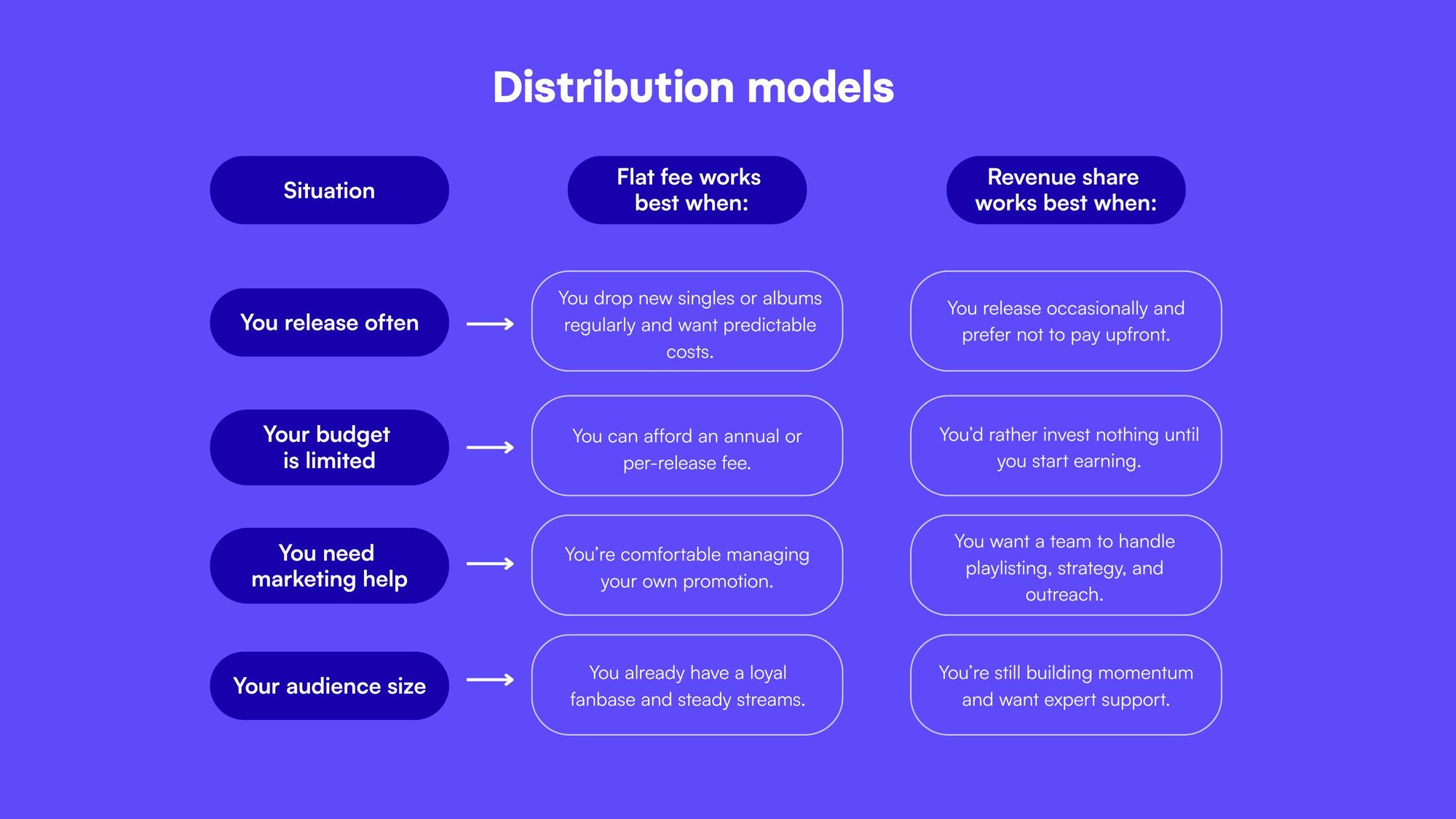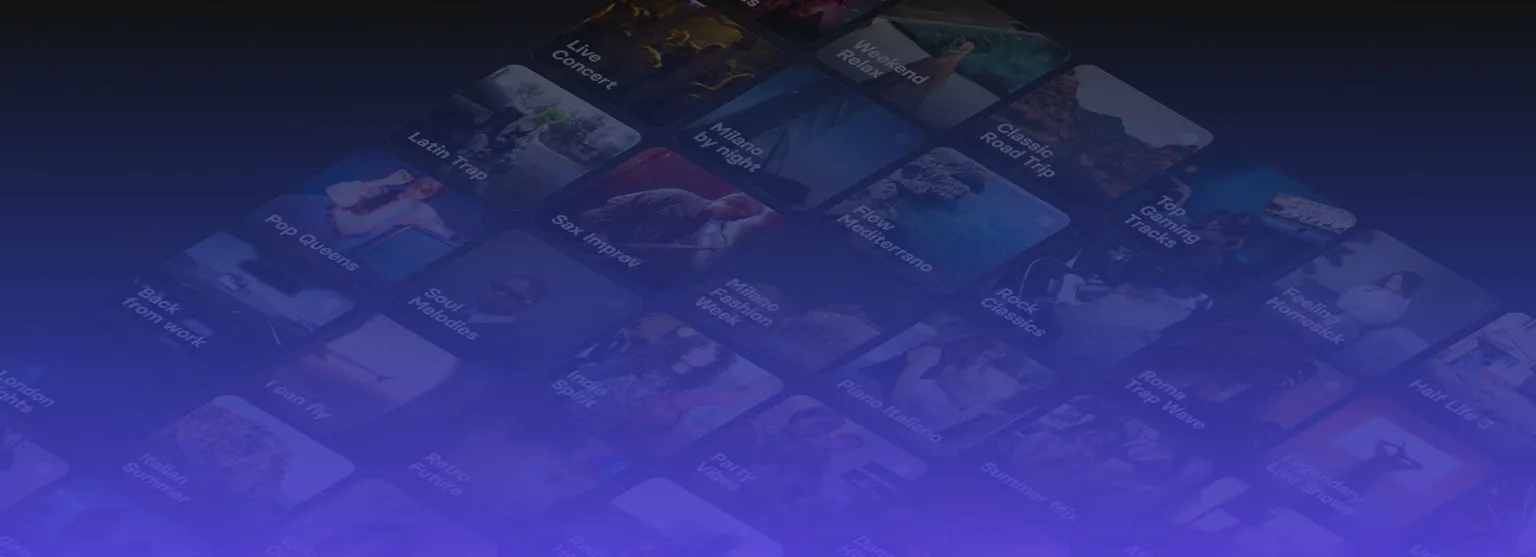
If you’ve ever tried to release your own music, you’ve probably realized that distribution is one of the most important and confusing steps of the entire process. Before your tracks can appear on Spotify, Apple Music, Amazon Music, or TikTok, they need to go through a music distributor.
And when you start comparing distributors, you quickly notice two main pricing models: flat fees and revenue share.
Some distributors charge you an upfront fee to upload your songs, while others take a percentage of your royalties. Both options can make sense, depending on where you are in your career and what kind of support you’re looking for. In this guide, we’ll break down both models, highlight the pros and cons of each, and help you figure out which one fits your goals as an independent artist.
What we're going to explore:
- What does a music distributor actually do?
- The flat-fee model
- The revenue-share model
- Which model is right for you?
- Hidden costs and contract details
- Real life examples
What does a music distributor actually do?
At its core, a music distributor’s job is to deliver your music to digital streaming platforms (DSPs) and online stores. They handle all the technical steps: preparing your audio and artwork, submitting metadata, ensuring your releases appear correctly, and collecting your earnings from streams and downloads.
But in 2025, distribution is about much more than just getting your music online. Many companies now offer extra services such as:
- Playlist pitching and promotional campaigns
- Data analytics and fan insights
- Publishing and sync licensing opportunities
- Rights management and royalty collection
- Artist support and marketing tools
In general, distributors can be divided into two main types:
- Aggregators: they focus mainly on uploading your music. You pay a set fee, and you keep all your royalties.
- Full-service distributors: they work more closely with artists, offering career development, marketing help, and industry connections, in exchange for a share of your revenue.
Understanding this difference helps make sense of why pricing models vary so much.
Don’t know which online services to use to distribute your music?
Don’t worry, we’ve created a guide showcasing the best music distribution platforms available for independent artists!
The flat-fee model: paying upfront, keeping 100%
With the flat-fee model, you pay a specific amount, either per release or as a yearly subscription, to distribute your music. After that, you keep 100% of your royalties.
This approach is extremely popular among independent artists who prefer full control over their earnings. It’s simple, transparent, and predictable.
Pros of flat-fee distribution:
- You keep all your revenue. Once you’ve paid the fee, there are no hidden cuts.
- It’s cost-efficient if you release often. If you drop new singles or albums regularly, the cost per release goes down over time.
- It’s easy to understand. You know exactly how much you’ll spend each year.
Potential downsides:
Upfront costs
If you’re just starting out or have a limited budget, paying $20–$50 per release can add up.
Limited support
Most flat-fee distributors don’t include marketing or playlist pitching, you’re mostly on your own.
Additional paid features
Some services charge extra for analytics, publishing, or removal requests.
That said, if you’re an active artist who knows how to promote your music independently, the flat-fee model can be the best long-term value.

The revenue-share model: no upfront cost, shared earnings
The revenue-share model (also called percentage-based distribution) works differently. Instead of paying upfront, the distributor takes a percentage of your royalties, usually between 10% and 30%, in exchange for extra services and professional support.
This system can be great for artists who don’t want to spend money upfront or who would benefit from hands-on help with promotion, playlisting, or audience growth.
Why artists choose revenue share:
No risk at the start
You don’t pay until you earn, which makes it easier to release music without worrying about costs.
Aligned incentives
Since the distributor only makes money when you do, they’re motivated to help your music perform well.
Access to expert support
These companies often handle marketing, DSP pitching, or sync opportunities that can expand your reach.
However, consider these drawbacks:
Ongoing commission
You’ll share your earnings for as long as the song generates revenue.
Less control
Depending on the deal, you may need approval for releases or marketing decisions.
Variable service quality
Not every distributor provides the same level of support, some may overpromise.
This model can be a win-win for developing artists who want guidance, exposure, and a partner invested in their success.
A look at Matchfy: distribution & promotion on one platform
One interesting option to consider is Matchfy, which combines music distribution and promotional features into a unified platform. According to their site, they allow artists to distribute tracks to all major platforms without extra distribution fees. They position themselves as an integrated solution where the user can manage both distribution and promotion in one place.
In practice, Matchfy might appeal to emerging artists who prefer a combined solution (distribution + promo) under a subscription model.

Which model is right for you?
Choosing between flat fee and revenue share depends on your budget, release frequency, and career goals. Here’s a quick comparison:

Some distributors even offer hybrid models, where you pay a small setup fee plus a lower revenue share, combining predictability with partnership.
Hidden costs and contract details to watch for
Before signing up with any distributor, it’s worth reading the fine print. Here are a few common things artists overlook:
- Annual renewal fees: some platforms charge a yearly cost to keep your music live.
- Takedown or update fees: you might have to pay to edit metadata or remove a release.
- Optional paid add-ons: playlist pitching, publishing administration, or sync placements may not be included.
- Contract terms and exclusivity: check how long you’re tied to the distributor and whether you can switch easily.
- Royalty-split features: if you collaborate with other artists, see if the platform supports automatic revenue splitting.
Being aware of these details will help you avoid unpleasant surprises later.
Real-life examples & how this plays out
Let’s walk through two scenarios:
Artist A is prolific: releasing multiple singles and EPs every year, managing their own social media, and already working with some fans. They want to maximize profit and minimize outside commissions. A flat-fee distributor is ideal. After paying the annual or per-release fee, all subsequent royalties go straight to them.
Artist B is just getting started, lacks promotional experience, and doesn’t want to risk upfront money. They’d benefit from a revenue-share distributor to help pitch, campaign, and promote, even though they’ll split income. If the distributor delivers real growth, the tradeoff can be worth it.
Conclusion
At the end of the day, there’s no perfect distribution model, only the one that fits your current phase and goals.
Choose flat-fee distribution if you’re confident in your promotion strategy, release consistently, and want to keep full royalty control.
Choose revenue share if you want someone in your corner pushing plays, curating playlists, or helping you grow your audience and you’re okay giving up a portion of earnings.
And if you come across platforms like Matchfy, evaluate them carefully: understand their fee structure, what services truly come included, and whether the promotional tools actually deliver results. Use free trials or pilot releases to test, and always read the fine print.

